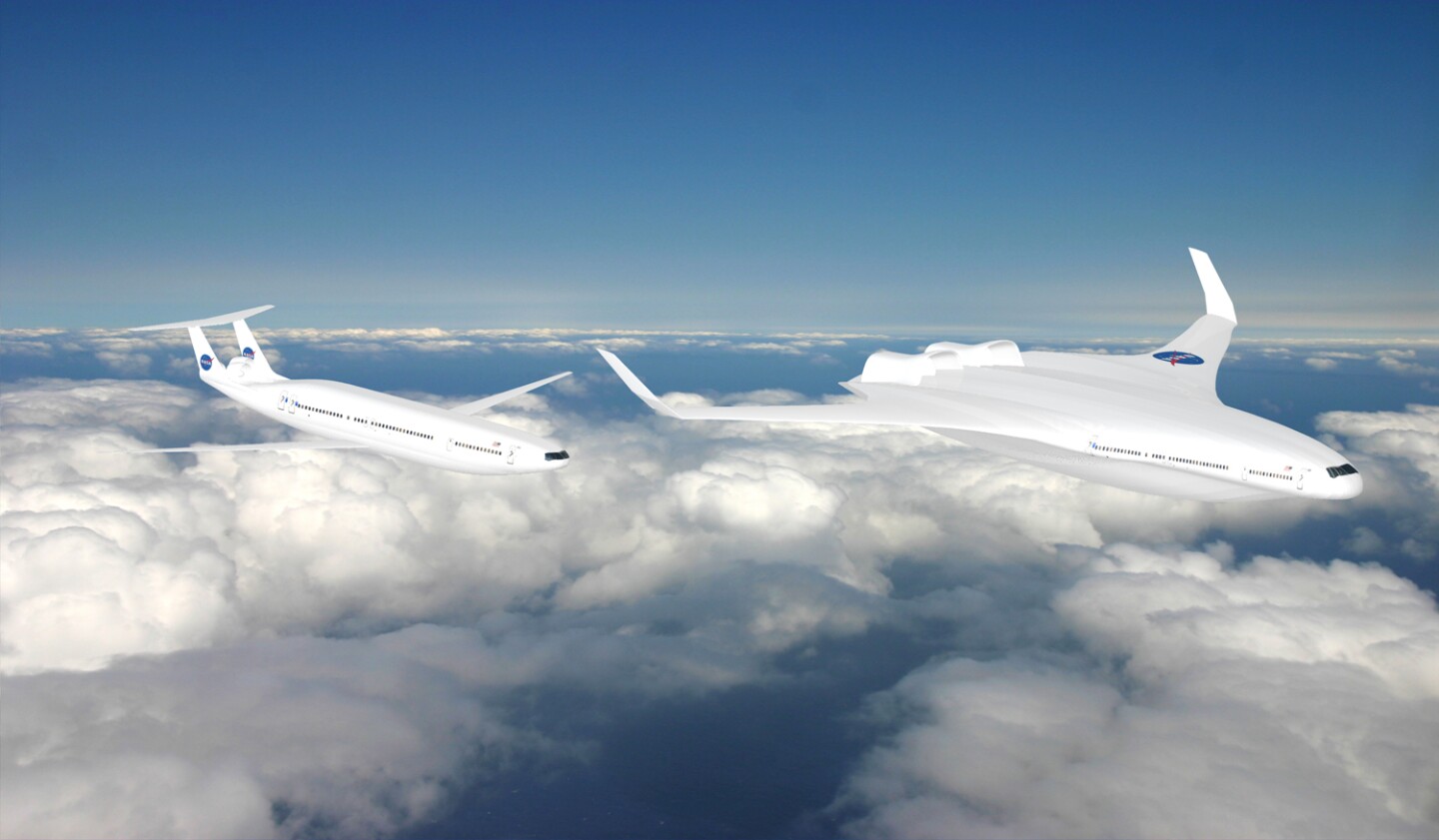The contribution of aircraft to greenhouse gas emissions has been well documented - a 2009 study [PDF] by Friends of the Earth found that air travel is the world’s fastest growing source of greenhouse gases like carbon dioxide, generating nearly as much CO2 annually as that from all human activities in Africa. Biofuels are being trialled in an effort to combat the issue, but with air traffic expected to double by 2035 it would seem that a fundamental shift in technology is needed to make real progress. That's the starting point for the D “double bubble” – a design concept presented to NASA by an MIT led research team which promises a 70 percent improvement in fuel economy, reduced noise, lower nitrogen oxide (NOx) emissions and the ability to use shorter runways.
The D double bubble design uses long, skinny wings, a small tail and - hence the name - replaces the traditional cylindrical fuselage with a two partial cylinders placed side-by-side. The engines sit at the rear of the fuselage rather than on the wing to make use of a technique called Boundary Layer Ingestion (BLI). This approach sees slower moving air from the wake of the fuselage enter the engines, resulting in less fuel consumption for the same amount of thrust. The downside is slower speeds and more stress on the engine.
The result is a plane that travels 10 percent slower than the Boeing 737 it is designed to replace, but according to lead designer of the D series Mark Drela, the longer flight times would be partially mitigated by the ability to load and unload the plane faster. Another advantage is that it could also be used with current airport infrastructure.
Along with the 180-passenger D series, the research team has also produced a blueprint for a much larger (350 seat) H series that would be equivalent to a Boeing 777. This design uses the BLI technique and a wider fuselage with an aerodynamic triangular-shaped hybrid wing body.

A second version of the D series has also been put forward. This design doesn't save as much fuel (around 50 percent) but is a more viable near term alternative because it that could be built using current jet technology and materials.
The MIT led project is the result of a $2.1 million contract awarded by NASA in 2008 as part of an aeronautics research program aimed at putting greener planes in the sky by 2035. Boeing, GE Aviation and Northrop Grumman are also taking part in the program.
The team from the MIT's Department of Aeronautics and Astronautics was headed by principal investigator Ed Greitzer and Aurora Flight Sciences Corporation and Pratt & Whitney also contributed.
NASA is expected to announce a second phase of the program in coming months.





